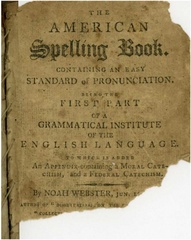Citing Sources

Historians use a citation style referred to as Turabian (or Chicago). You should use this style when citing History work.
Beyond just considering how to cite sources, students must also master when to cite sources. The following outlines how and when to cite sources, and more specifically, how to avoid plagiarism.
Plagiarism is when you use someone else's words or ideas without giving them credit.
Part of being a good historian is using other scholars’ ideas and words and building upon them to make our own statements about the past. This only becomes plagiarism when the ideas or words of others are not properly cited as such, and so become implied that they are your own. This is essentially intellectual theft, even if it comes about because of carelessness and no malicious intent on your part. Following these next instructions will aid you in presenting your ideas as your own, and giving credit to others when credit is due.
When to use "quotes"?
Use quotes only when you are taking information word for word from another author, be that a book, article, webpage, interview, or any other source. If you reword ideas you do not need to use quotation marks. Note: just adding a word to a sentence or changing the order is not what I mean by rewording. You must digest the information you have read and present it in your own way. Always put quotes in context (see other sheet for further instructions on this). Professor Ostendorf reminded the class that “every quote should be directly followed by a footnote so the reader can see the source if interested.”[1] (Note in this example how well integrated my quote is with the text. The following is the incorrect way to use quotes: Professor Ostendorf reminded the class of how to use quotes. “Every quote should be directly followed by a footnote.” Also, note that my ending punctuation is inside the quotations marks above)
When to footnote information?
Quotes are not the only time you must footnote information. Any time you get an idea from another source you must give them credit for that idea. Any paragraph or sentence that contains information from another source (primary or secondary) must have a footnote at the end of the sentence or paragraph(s) following the punctuation. If all the information within one paragraph comes from one or even two sources, you can put both sources in the same footnote at the end of the paragraph. The only exception to this is that in every instance you use quotation marks they must be directly followed by a footnote. If several paragraphs in a row contain information from one source, it is acceptable to end the last paragraph in which the source was used with a footnote. It will then be assumed the preceding paragraphs come from the same source. In paragraphs when you are writing from your own knowledge or expressing your own thoughts, footnotes are not necessary.[2]
What if I have other questions?
[1] Ann Ostendorf, When to Use Quotations (Milwaukee, Wis.: Marquette University Press, 2006), 1.
(This is an example of how to cite a book, when using other types of sources try to give the equivalent information to the best of your ability. When it doubt, more is better.)
[2] Ibid., 2; Ann Ostendorf, “Citations are Fun,” Journal of Citations 9 (Spring 2006): 3–4.
(Ibid means the same as above, so this can only be used if the same source is footnoted twice in a row, it is acceptable to use if the page numbers are different, as in this instance. This is also how you would cite 2 sources in 1 footnote, the second being an article.)